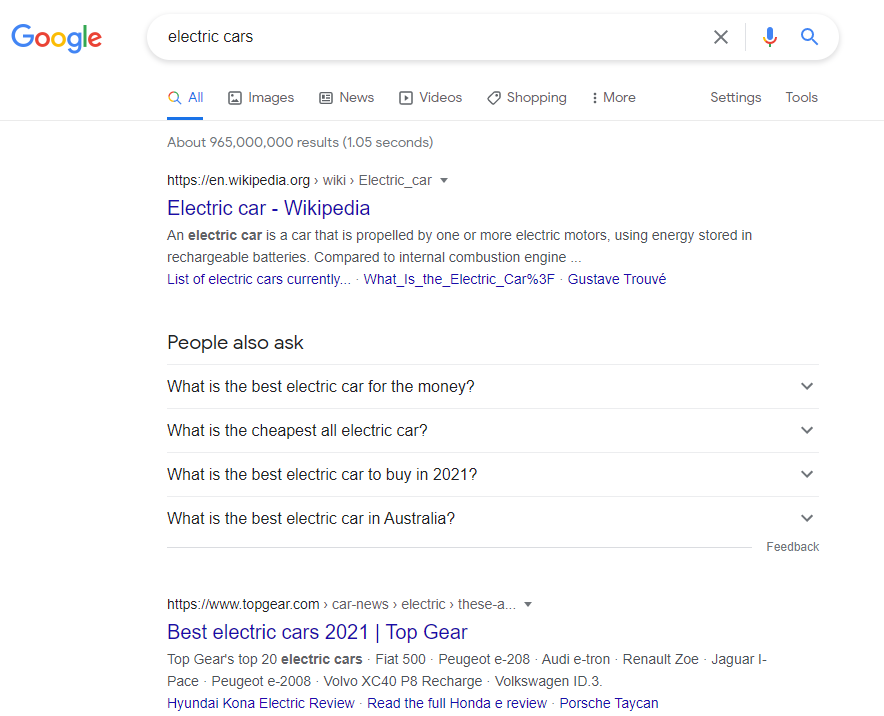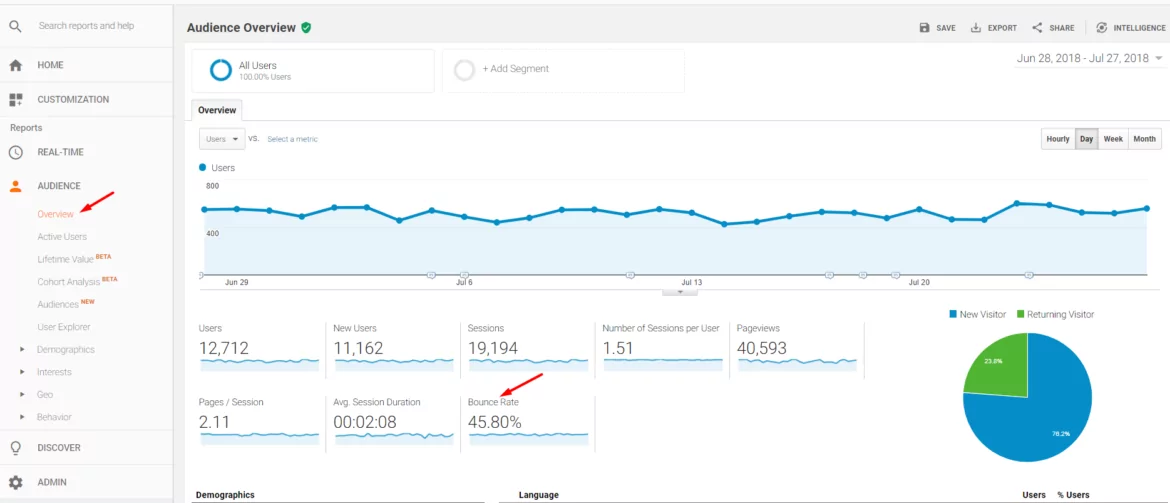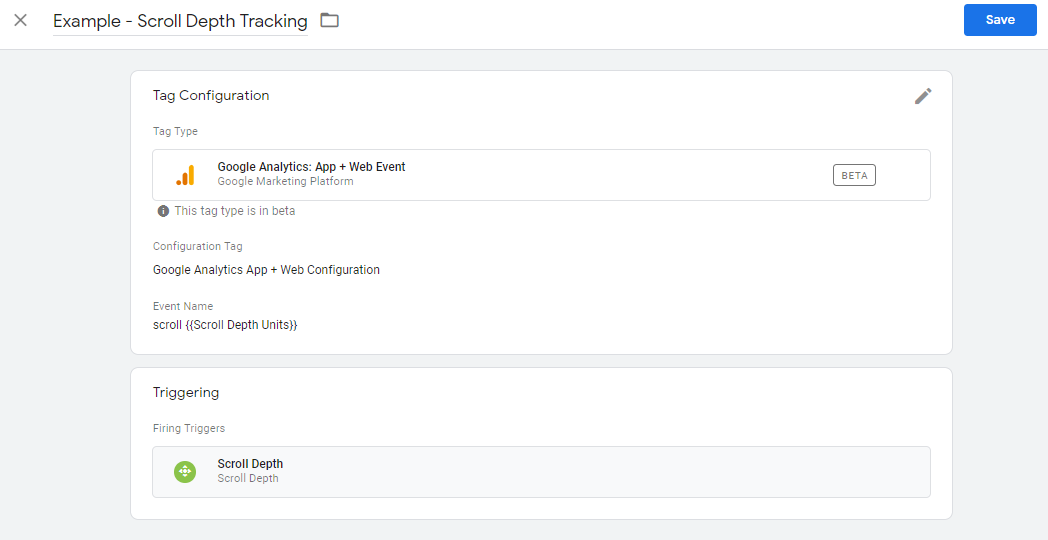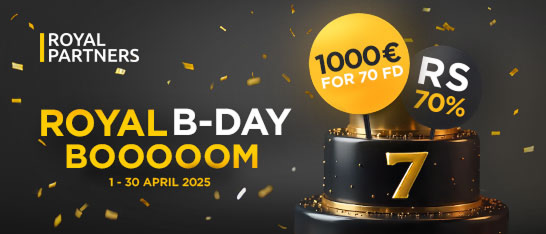When people first hear the word SEO, they often think it’s just a misspelling of the acronym CEO – but search engine optimization has nothing to do with high-ranking individuals… but it does have something to do with positions.
SEO is used to improve your ranking – position – on a search engine result page. It involves optimizing your content and platform so that it ticks the boxes in a search engine’s algorithm, pushing your website further up the list.
Why does SEO matter?
The Internet is a vast space. There are millions, if not billions, of websites out there – and if you own one of them, it can be tough to stand out amongst the competition. As a result, website owners have to optimize their content to the max to reach as many users as possible.
There’s no such thing as a website catalogue: users navigate the web using search engines like Google, Bing, DuckDuckGo, and so on. As a result, being visible on these platforms is critical to remaining relevant and attracting users to your platform.
Research shows that a quarter of all Google Search users click on the first result; and according to another article, page 2 of Google Search only ever sees 11.9% of all traffic. There’s even a running joke that one could hide a dead body on page 2 of Google search and it’d take years for it to be found.
This shows just how important it is to get your platform as high on the first page as possible: while 12% out of the total number of people that use Google daily is nothing to scoff at, you will still be missing out on clicks from 88% of all users.
There are many different ways to increase traffic and get a higher CTR, but SEO to them is what a good foundation is to a house – your content has to be visible to be clicked on.
SEO makes sure that your content reaches its audience. It doesn’t have to take over your entire page, making your content non-human-readable and just a collection of senseless keywords – sometimes getting to that first page on your search engine of choice is a matter of one or two technical adjustments.
How to optimize your content
There are 5 key stages to optimizing your content for search engines. However, before we talk about them, we first need to cover the basics.
Understanding search engines
The key to mastering the art of SEO is understanding how search engines work. They perform 3 primary functions: crawling, indexing, and ranking.
Crawling
Crawling is the process of search engine spiders and/or web crawlers (no insects involved, just scripts!) going over the entire web and finding new, updated, or missing content.
Indexing
Once crawling is done, it’s time for indexing. During this stage, all the content that was found previously gets stored and organized, making it so the web page containing it can be displayed on search engine result pages (SERPs).
Ranking
Once web pages are added to the index, they are then ranked by their relevance to the search query to make sure users see the best results as quickly as possible. Google’s ranking system is known to be particularly effective at this.

Step 1: Keyword research
Now that we have a basic understanding of how search engines work, let’s take a look at how you can optimize your content for them. Our goal, naturally, is to be ranked first (or at least end up on the first page!).
Just like all other projects, search engine optimization starts with research – in this case, we will be looking at relevant keywords. These are phrases and words that are connected to your web content and that people commonly use in search queries.
In order to determine what keywords you should stick to, you will need to carry out some market research. First, find out what queries your competition ranks high for. Then, study your target audience: what are they searching for? What kind of answers are they seeking – videos, pictures, articles, guides?
Once you have a big pool of possible keywords ready, you can start trimming it down.
Keyword tools
There is special software that can help you to trim your keyword lists and determine which ones will actually fit your content and make it better optimized for search engines. These tools also provide useful statistics such as showing you what kind of people search for your keywords, how often they do it, and so on.
Long-tail keywords
The next step to creating a shortlist of relevant keywords is understanding how long-tail keywords work. Just as the name suggests, these are (relatively) long search queries that often consist of up to 4 words. They are usually highly specific.
Long-tail keywords often have low search volume, yet in many cases they have higher conversion rates – people that use specific searches are often serious in their intent to purchase a product or service. As a result, long-tail keywords are often prioritised on service provider and e-commerce platforms.
Search intent
The final step to trimming your keyword shortlist is understanding the search intent of your user base. This will help you to filter out keywords that generally fit your content but can connect it to customers that want to have nothing to do with it.
There are four different types of search intents:
1.Navigational
Happens when a user wants to go to a specific web page. Many people can’t be bothered to enter the full web address of the platform they know they want to visit – so they search for its name or what they remember about its contents on websites like Google or Bing.
2.Transactional
Users that want to buy a particular product or service, e.g. “buy Metallica concert tickets”.
3.Informational
The most typical type of search queries – this concerns users that are looking to learn something new, be it the dating history of their favorite celebrity or the finer details of how glass is made.
4.Commercial
Happens when a user has a likelihood of becoming a customer or a business lead – you can judge and evaluate this type of intent by the number of people who advertise on a specific search query or keyword in Google Adwords.
Step 2: On-page SEO
Once you are done creating a shortlist of relevant keywords, it’s time to do some on-page SEO (or, as it is also called, on-site SEO).
This is the process of actually changing the contents of your platform in accordance with SEO guidelines. It involves:
- -Using short and readable URLs
- -Making use of your keywords while maintaining optimal keyword density (usually 1-2%)
- -Using hyperlinks to lead users to other useful content, both on your web page and outside of it
- -Including optimal long-tail keywords in your headings and subheadings (and putting your titles and subheadings in header tags!)
- -Adding alt text to your pictures, compressing their size, making them more relevant to the content you’re presenting
- -Finally, and most importantly, creating unique, valuable, high-quality content that will benefit your web page visitors
Step 3: Technical SEO
With on-site SEO out of the way, you should next take care of the technical aspects of your platform.
Technical SEO is the process of optimizing your website to make sure it meets the technical standards of modern search engines and is a great way of organically improving your rankings. It is vital to any web platform: no matter how exceptional your content is, if your technical SEO isn’t up to par, nobody is going to see your web page.
First, make sure that search engines can actually locate, crawl, render, and index all web pages on your website. Remember that the best web pages are optimized for mobile, are safe and free from viruses and malware, don’t have duplicate and non-original content, and have quick load times. Optimize your URL structure, Hreflang, Canonical tags, 301 redirects, and so on.
Contrary to popular belief, you do not have to fully optimise every single aspect of technical SEO in order to make your web page worthy of appearing on the first page of Google search – but it definitely should not be neglected.
Step 4: Link building
The next step to optimising your website for search engines is link building.
Just like the name suggests, this is the process of building up links – backlinks from other websites to yours, to be precise. This is both the most challenging and the most beneficial step to optimising your web pages.
The more backlinks from authoritative domains and platforms there are to your website, the higher you will be ranked on relevant search queries. A high-quality backlink portfolio makes your website seem more credible to search engines.
There is a wide variety of different ways of obtaining high-quality backlinks. Here are our favorite ones:
1.Publish great content
High-quality domains won’t link useless, non-user-friendly content and web pages. Make sure that your content is at least on par with that of your competitors, if not better, and ensure that you have an intuitive UI, that the ads displayed on your website are non-intrusive, and that your platform can provide an overall pleasant user experience.
2.Returning the favor
Search engines also analyze the backlinks that you yourself provide on your website. Make sure that you only link authoritative sources and don’t engage with scummy websites. A good idea is to backlink web pages that you want to backlink you: that way you can inform them that their content has been hyperlinked on your platform, which can possibly lead to them returning the favor.
3.Publish guest articles
This is one of the easiest ways to boost your backlink portfolio, but it can sometimes cost a pretty penny. You can post guest articles on reputable web platforms – as those articles will contain links to your own website, it will count towards your backlink portfolio.
However, the requirements for such guest posts are usually quite demanding: no self-advertising, the content must be relevant to the platform it will be posted on, it should be fully original, comprehensive, informative, and so on. High-quality domains won’t publish content that provides little value to users no matter how much you pay them – and even if they do, it will likely receive little interest and traffic and harm your chances of cooperating with that platform again in the future.
Step 5: Measuring & tracking SEO success
The final, and perhaps the most important step of optimising your website is evaluating the success of all the measures you’ve taken.
Remember: it is highly likely that you will not succeed on your first try. SEO takes a lot of trial and error, and the final success of your optimization will be determined by how well you will be able to pinpoint your mistakes and areas that still need improvement.
The stats that you have to pay attention to the most will depend on the nature of your website and content, but there are some things that are pretty universal. Here are the metrics that we think are key to search engine optimization:
Bounce rate
Bounce rate refers to the number of users who only visit one web page on your website, thus generating only one session. Such users generate no additional requests to the analytics server. High bounce rate is usually not a good sign: it means that people have no incentive to stay on your platform, which is especially bad for websites that depend on users seeing as much of their content as possible.

Conversion rate
Conversion rate refers to the number of conversions divided by the total number of unique website visitors. “Conversion” can be any action like account creation, purchase, and so on.
CTR
Click-through rate shows you how many users clicked on your website after seeing it in search results. It shows how well-optimised your title and meta description are. CTR and conversion rate can help you to determine the potential profitability of your website.
Scroll depth
Scroll depth helps you to determine just how much users choose to interact with your content – it shows how far your visitors scroll down on a specific web page. If your content depends on users reaching a certain place on your website, e.g. filling out a form or seeing an ad for your product at the bottom of the article, this can be an important metric to track. You can set up a trigger for it in Google Analytics.

Average session duration
This is another great metric for determining how users interact with your platform. Session duration is the total amount of time that a user spends engaged with the contents of your web page – the session terminates if the website visitor has been inactive for a certain period of time (30 minutes by default).
Conclusion
SEO is vital to the success of pretty much any website. Even a little investment in search engine optimization can provide high rewards – visibility, conversion, and unique traffic.
When optimizing your content and web platform for search queries, it is important to not overdo things. Many websites fall into the keyword trap and neglect the creation of unique, comprehensive content that entices users into interacting with their web pages. Balance is key.
As long as you have a clear understanding of both your niche and your target audience, SEO is a breeze. There are many tools out there that make search engine optimization as easy as ABC, and if you have the opportunity, you should definitely take advantage of them. After all, SEO is one of the keys to reaching the maximum potential of your website.




























.png)

.png)

.gif)

